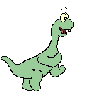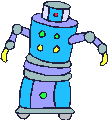
compare and rank
1.1 Compare two or more sets of objects (up to ten objects in each group) and
identify which set is equal to, more than, or less than the other.
|
|
1.2 Count, recognize, represent, name, and order a number of objects (up to 30).
|
|
1.2 Know that the larger numbers describe sets with more objects in them than the
smaller numbers have.
|
|
|

Number Sense
(cont)
2.0 Students understand and describe simple additions and subtractions:
2.1 Use concrete objects to determine the answers to addition and subtraction
problems (for two numbers that are each less than 10).
|

estimate and round
3.0 Students use estimation strategies in computation and problem solving that
involve numbers that use the ones and tens places:
3.1 Recognize when an estimate is reasonable.
|
|
|
Properties
1.1 1.1 Identify, sort, and classify objects by attribute and identify objects that do not belong to a particular group (e.g., all these balls are green, those are red).
|
|
|

Measurement and Geometry
|
1.1 Compare the length, weight, and capacity of objects by making direct comparisons with reference objects (e.g., note which object is shorter, longer, taller, lighter, heavier, or holds more).
|
|
1.2 Demonstrate an understanding of concepts of time (e.g., morning, afternoon, evening, today, yesterday, tomorrow, week, year) and tools that measure time (e.g., clock, calendar).

Time
1.3 Name the days of the week.
1.4 Identify the time (to the nearest hour) of everyday events (e.g., lunch time is 12 o’clock; bedtime is 8 o’clock at night).
|
2.1 Identify and describe common geometric objects (e.g., circle, triangle, square, rectangle, cube, sphere, cone).
2.2 Compare familiar plane and solid objects by common attributes (e.g., position, shape, size, roundness, number of corners).
|
|
|
1.2 Identify, describe, and extend simple patterns (such as circles or triangles) by referring to their shapes, sizes, or colors.
|
|
|

Math Reasoning
1.1 Determine the approach, materials, and strategies to be used.
1.2 Use tools and strategies, such as manipulatives or sketches, to model problems.
2.0
Students solve problems in reasonable ways and justify their reasoning:
2.1 Explain the reasoning used with concrete objects and/or pictorial representations.
2.2 Make precise calculations and check the validity of the results in the context of the problem.
|
|